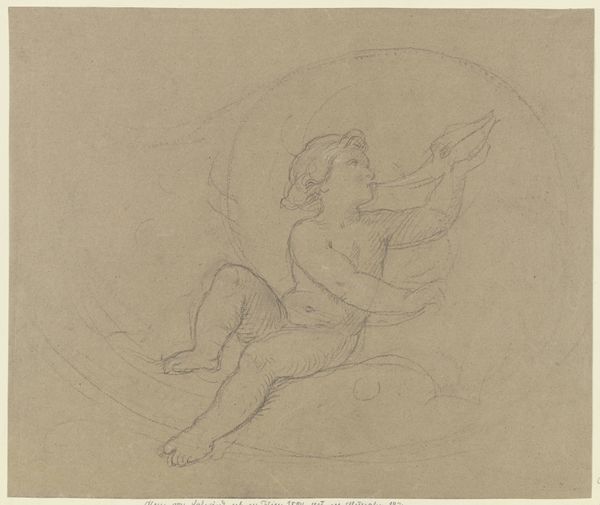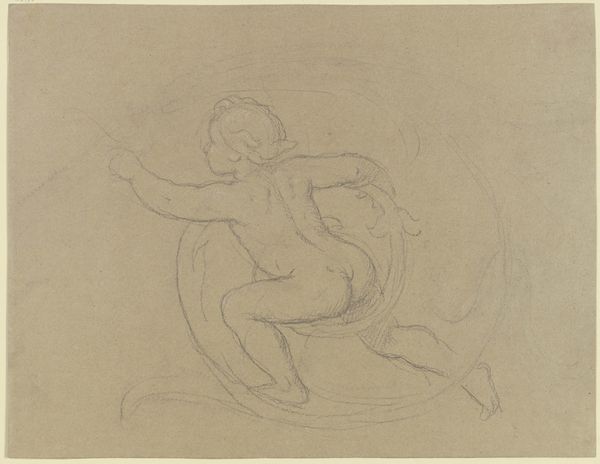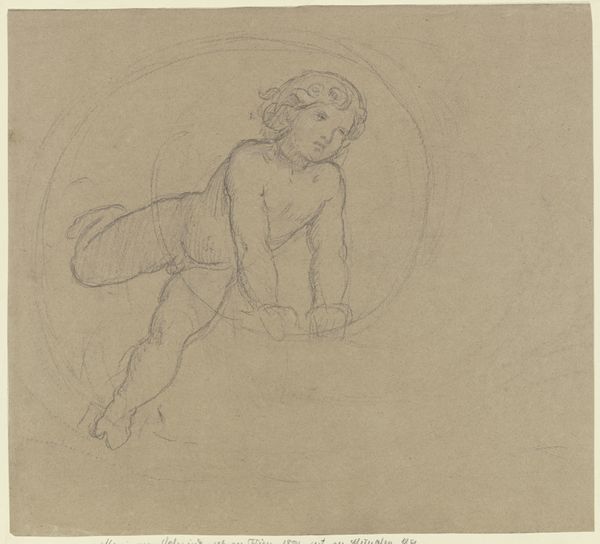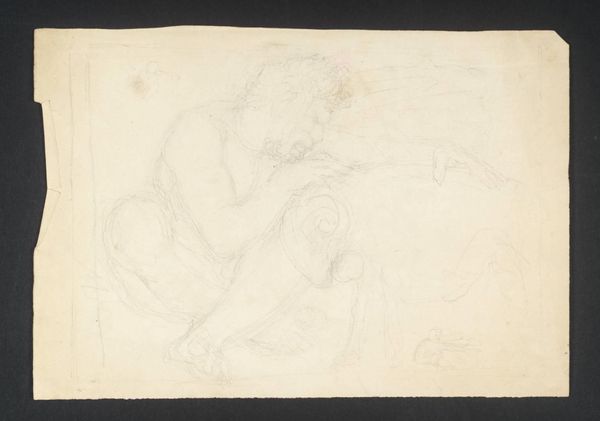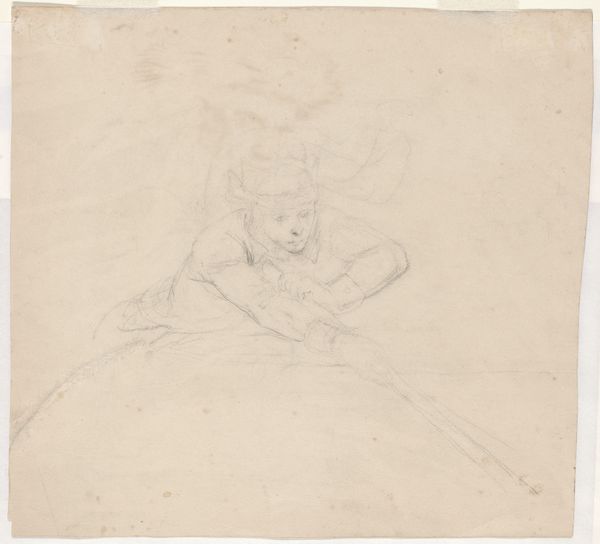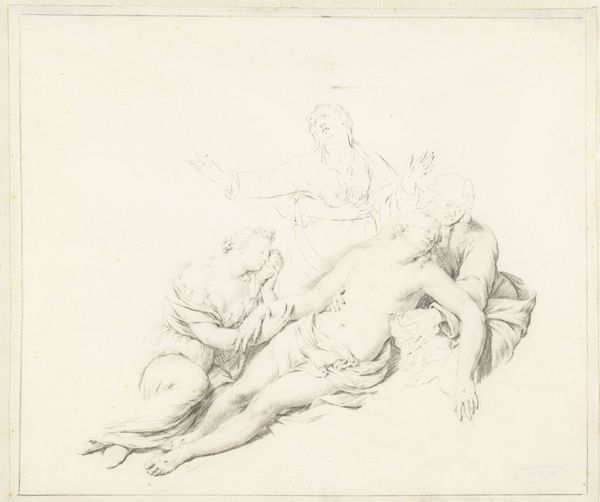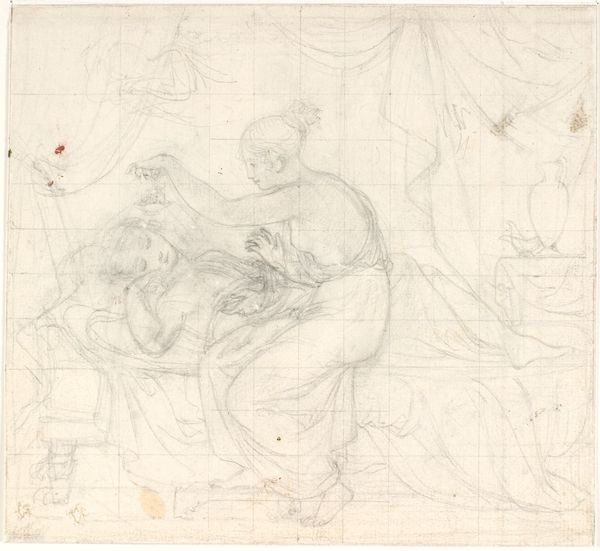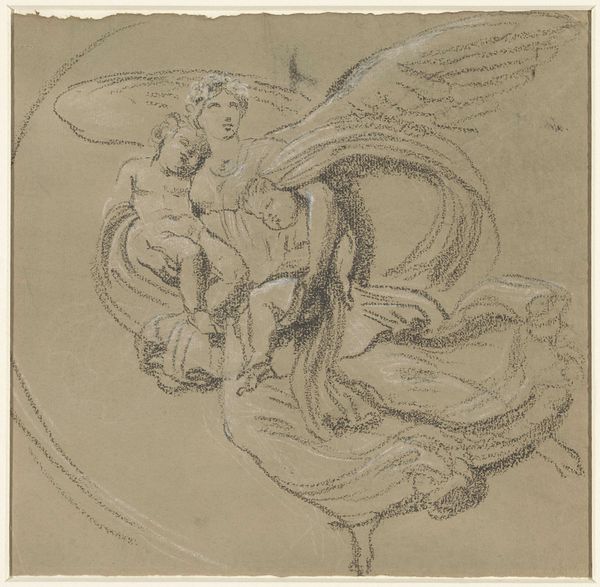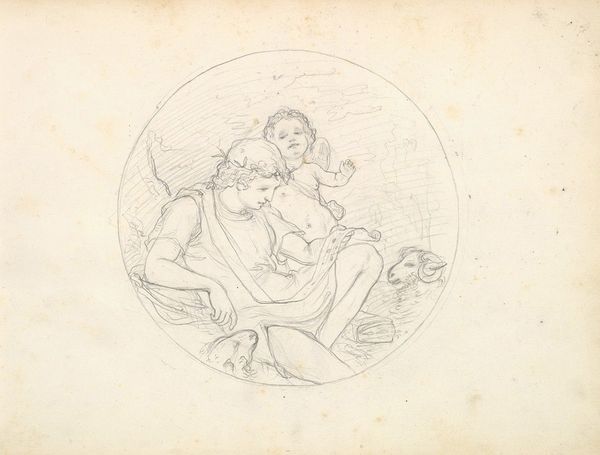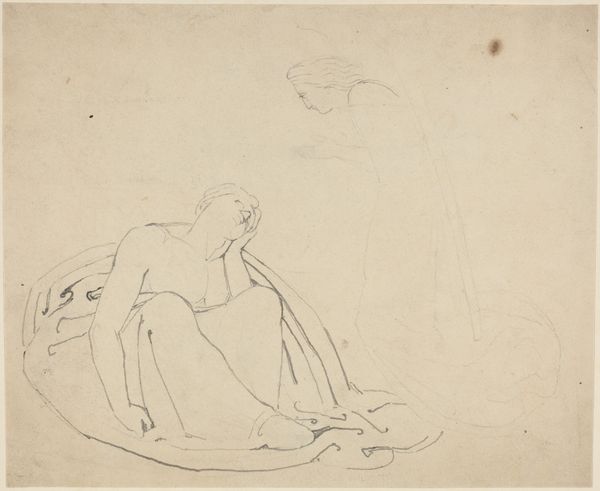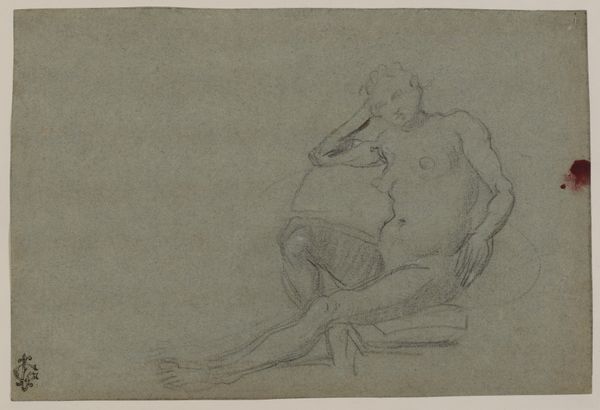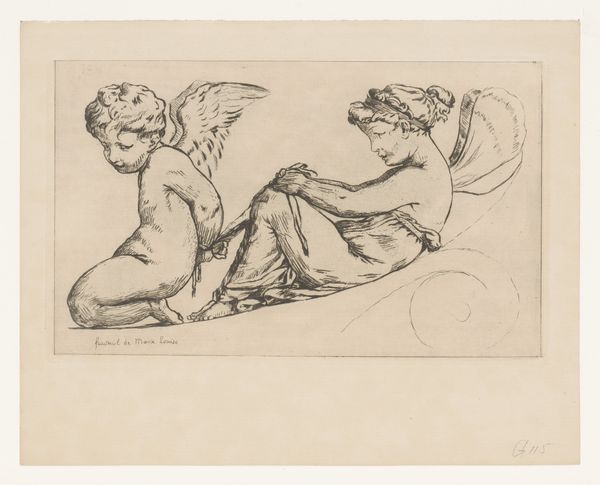
drawing, pencil, chalk
#
drawing
#
figuration
#
romanticism
#
pencil
#
chalk
#
nude
Copyright: Public Domain
Curator: We're looking at a drawing called "Putto zwischen Ranken, schlafend," housed here at the Städel Museum, crafted with chalk and pencil. It depicts a sleeping putto amidst foliage. Editor: It feels quite fragile, this delicate pencil work, and evokes a very sweet, melancholic feeling. The composition is interesting. It's contained within that roughly sketched circle. Curator: Precisely! The image taps into a rich history of cherubic figures in art, particularly during the Romantic period. The putto is often a symbol of divine love, innocence, and perhaps in this case, also of vulnerability. Here we can imagine a larger cultural fascination of revisiting a time of innocence amid rapid societal changes. Editor: The way the artist uses light and shadow, especially around the child’s form, suggests more than just anatomical accuracy. It accentuates the feeling of peace and rest but also perhaps a hint of transient life, since it's caught at its beginning, at birth, it might be said. Curator: Absolutely. Also, think about the foliage framing the putto. Vines often represent growth, life, and connection. Combined with a sleeping child, what do we perceive about that continuous, unending movement when faced with rest? Editor: Interesting point. Formally, the vines echo the curvature of the putto's body. It could be argued this mirroring of shapes and lines creates a sense of visual harmony, yet, maybe also suggesting fragility; look closely to see these fragile strokes won't support anyone. Curator: It really draws us into this realm of reverie, of potential, doesn’t it? Even just a chalk and pencil sketch of a sleeping child encapsulates something monumental. Editor: Yes, something universally felt and something intimate. I hadn't considered the vines as anything more than decor at first, but hearing you, I can now perceive the tension of that contrast between dormancy and proliferation. Thank you!
Comments
No comments
Be the first to comment and join the conversation on the ultimate creative platform.
